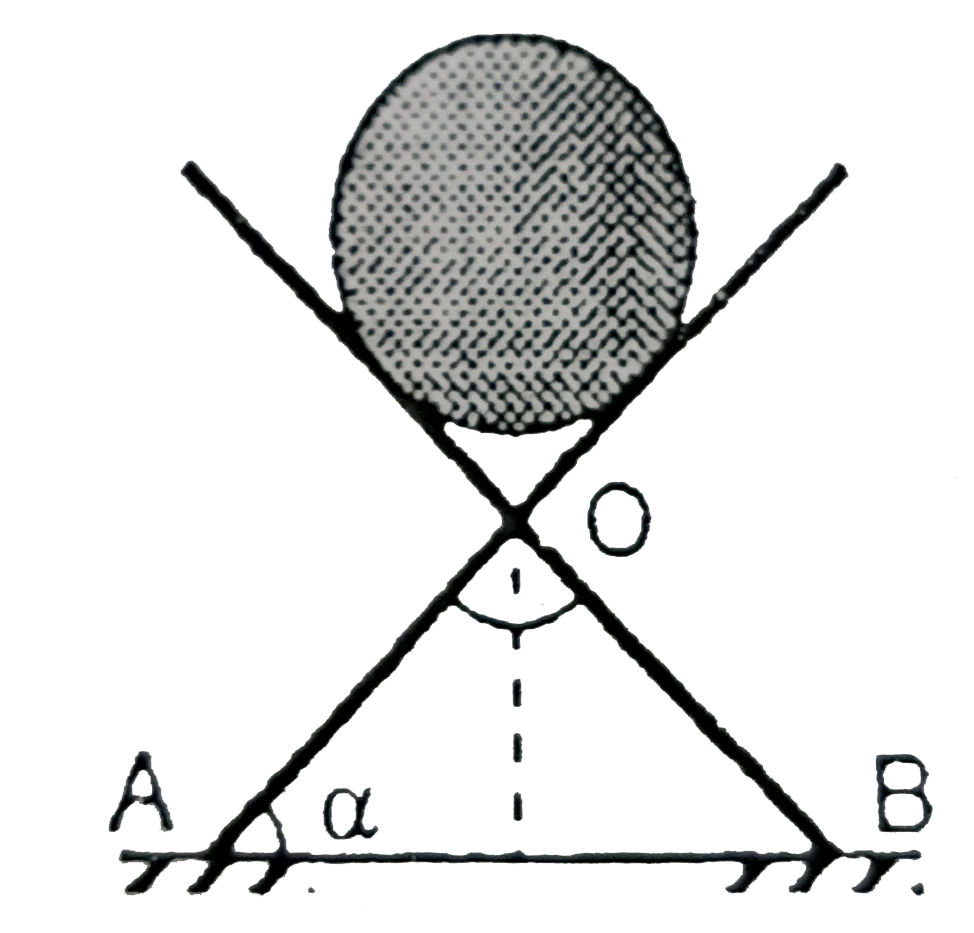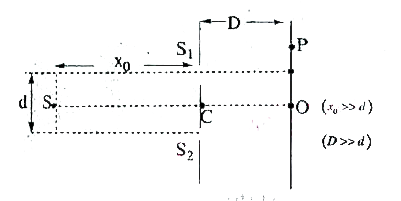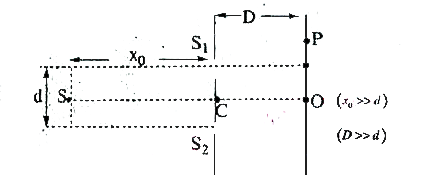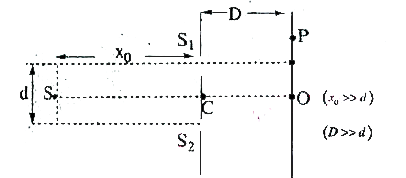In Young's doulbe-slit experiment the separation between two coherent sources S1 and S2 is d and the distance between the source and screen is D. In the interference pattern, it is found that exactly in front of one slit, there occurs a minimum. Then the possible wavelengths used in the experiment are
λ=d2D, d23D, d25D……
λ=d2D, d25D, d29D……
λ=d2D, d22D, d23D……
λ=d23D, d27D, d211D……
Path difference=dsinθ≈d2D
Topper's Solved these Questions
- BOOK - FIITJEECHAPTER - GMP ASSESMENTEXERCISE - Assertion & Reason15videos
GMP ASSESMENT
- BOOK - FIITJEECHAPTER - GMP ASSESMENTEXERCISE - Multiple Question58videos
GMP ASSESMENT
- BOOK - FIITJEECHAPTER - GMP ASSESMENTEXERCISE - Numerical Based61videos
GMP ASSESMENT
- BOOK - FIITJEECHAPTER - GENERAL PHYSICSEXERCISE - MATRIX MATCH TYPE3videos
GENERAL PHYSICS
- BOOK - FIITJEECHAPTER - GRAVITATIONEXERCISE - Numerical based Question2videos
GRAVITATION
Similar Questions
Statement-1 : When an ideal gas is freely expanded change in internal energy of gas is zero, where as when real gas is expanded freely it's internal energy decreases.
Statement-2 : There is no intermolecular force of attraction in ideal gas.02:46View SolutionA disc of radius a and mass m rests between two light rods, which are smoothly hinged together at point O with their ends A and B resting on a smooth table and are maintained in equilibrium by string AB as shown in the figure. Choose the correct option(s).
 02:37View Solution
02:37View SolutionA cyclist is going in a straight line at a unifrom velocity 18km/h. The resistance force can be expressed as force kv2 where k=0.8 where velocity is in m/s and unit of force is newton. The mass of the cyclist with the bicycle is 100kg. Neglect the rolling resistance force. If the power of the cyclist during the ride is 10x watt, then what is x ?
01:46View SolutionTwo resistors along with errors are kown as
R1=(30±3)Ω
R2=(60±3)Ω
column - I lists four alagebratic functions of R1R2 column -II lists corresponding errors where as column -III lisits the absolute errors

pick the correct optionView SolutionA particle is projected radially outwards from the surface of a planet with an initial speed of 4.0km/s. Maximum height attained by the particle is h=900km. Find the radius of the planet taking g=10m/s2.
04:04View SolutionIn Young's doulbe-slit experiment the separation between two coherent sources S_(1) and S_(2) is d and the distance between the source and screen is D. In the interference pattern, it is found that exactly in front of one slit, there occurs a minimum. Then the possible wavelengths used in the experiment are
04:04View SolutionIf the first minima in Young's double-slit experiment occurs directly in front of one of the slits (distance between slit and screen D=12cm and distance between slits d=5cm), then the wavelength of the radiation used can be
05:06View SolutionIn a Young's double slit experiment, the separation between the slits is d, distance between the slit and screen is D(Dgtgtd). In the interference pattern, there is a maxima exactly in front for each slit. Then the possible wavelength used in the experiment are:
View SolutionIn a Young's double slit experiment, the separation between the slits is d, distance between the slit and screen is D(D>>d). In the interference pattern, there is a maximum exactly in front for each slit. Then the possible wavelength (s) used in the experiment are
View SolutionIn Young's double experiment , in air interference pattern second minimum is observed exactly in front of one slit. The distance beween the two coherent source is 'd' and the distance between source and screen 'D'. The wavelength of light source used is
View SolutionIn Young's double experiment , in air interference pattern second minimum is observed exactly in front of one slit. The distance between the two coherent source is 'd' and the distance between source and screen 'D'. The wavelength of light source used is
View SolutionIn Young's double-slit experiment, white light is used. The separation between the slits is d. The screen is at a distance D (D » d) from the slits. Some wavelengths are missing exactly in front of one slit. These wavelengths are
03:46View SolutionIn a Young's double slit experiment, a monochromatic source of wavelength λ is used to illuminate the two slits S1 and S2.

The slits S1 and S2 are identical and source S is placed symmetrical as shown. Interference pattern is observed on a screen at a distance D from the centre of slit. The distance between the slits is d.
if the resultant intensity at P is same as that O, then the distance OP cannot be02:08View SolutionIn a Young's double slit experiment, a monochromatic source of wavelength λ is used to illuminate the two slits S1 and S2.

The slits S1 and S2 are identical and source S is placed symmetrical as shown. Interference pattern is observed on a screen at a distance D from the centre of slit. The distance between the slits is d.
if the source is moved by up by a very small distance y0, the central maxima will shift02:13View SolutionIn a Young's double slit experiment, a monochromatic source of wavelength λ is used to illuminate the two slits S1 and S2.

The slits S1 and S2 are identical and source S is placed symmetrical as shown. Interference pattern is observed on a screen at a distance D from the centre of slit. The distance between the slits is d.
If the size of slit S1 is slightly decreased, then07:16View SolutionIn a Young.s double slit experiment , a monochromatic source if wavelength lambda is used to illmunate the two slits S_(1) and S_(2) The slits S_(1)and S_(2) are identical and source S is placed symmetrically as shown .Interference pattern is observed on a screen at a distance D from the centre of slit . The distance between the slits is d .If the size of slit S_(1) is slightly decreased , them
04:50View Solution

